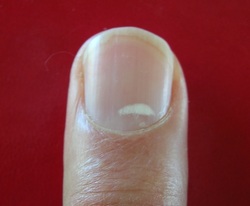|
Mermithidae is a family of nematode worms that are endoparasites in arthropods. Mermithidae are confusable with the horsehair worms of the phylum Nematomorpha that have a similar life history and appearance. Question: Does Cold Weather Cause the Cold or Flu?
This question has probably been asked since the first time the flu made someone sick. After all, cold and flu season occurs when the weather is cold, so there must be a connection, right? Well, not quite. No matter how many times your mother and grandmother told you not to go out in the cold because you would catch a cold or the flu, it just doesn’t work that way. Answer:The truth is, the flu and the common cold are caused by viruses. People get sick more often in the winter because they are exposed to each other more in the winter than in the summer. When it is cold outside, people tend to stay inside and are more likely to spread germs to one another. Also, because school is in session, kids are around each other all day and are not afraid to share their germs. With so many people in such close contact, the likelihood of passing germs is much higher when it is cold outside than when it is warm and people are outdoors. There is also evidence now that viruses spread more easily through dry air. When it is cold outside, the air is drier both outdoors and inside (where people have their heaters on) which may make it easier for germs to pass from one person to another. But it is not the cold weather that causes the cold, it just might make it easier to spread the virus. In tropical areas, where it does not get cold, the common cold and flu season generally occurs during the rainy season. But again, these illnesses are not caused by the rain. They are just more prevalent because people come in closer contact with each other than they do during the dry season. source  You finally finished repainting those end tables for the guest room. As you're washing up, you notice something on your fingernail. You try to scrub it off and realize the little white dots are not paint; they're actually part of your nail. You show the spots to your roommate and he says it could mean you have a calcium deficiency. Or wait, is it zinc? It's definitely some sort of nutritional deficit, of that he's certain. But you start to wonder if he's right because just last month, he told you that washing your face in egg whites will decrease the size of your pores. However, when you mentioned that to your dermatologist, she said that nothing can actually shrink your pores. So what are these white spots and how'd you get them? One of the most common causes for these little white spots, which can show up on both fingernails and toenails, is a condition called leukonychia. Although the name sounds pretty serious, the condition typically isn't. And while many people think they're caused by a calcium or zinc deficiency, that's generally not the case. In reality, these spots most often develop as a result of mild to moderate trauma to your nail. If you can't think of anything that would have injured your nail, consider the fact that nails grow very slowly, so the injury may have occurred weeks before the spots ever appeared. Another possibility is that the spots could be a sign of a mild infection or allergy, or a side effect of certain medications . Whatever the source of the injury, these spots typically do not require any treatment and should go away as your nail grows out. And they should not return unless you suffer another nail trauma. However, this generally applies when only a single or a few nails are affected. If all of your nails are showing white spots or streaks, the leukonychia could be related to another more serious condition such as anemia, cardiac disease, cirrhosis, diabetes or kidney disease. Overall, it's good practice to pay attention to changes and abnormalities in your fingernails and to consult your doctor if you're concerned. [source: stuffyoushouldknow] |
This is a collection of interesting facts collected from the internet. Archives
September 2015
Categories |

 RSS Feed
RSS Feed
